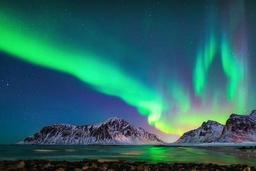
PhySci Q2 Week 5: VARIOUS LIGHT PHENOMENA & DISCOVERY OF RADIO WAVES
Quiz by Regin Adrian Suba
Feel free to use or edit a copy
includes Teacher and Student dashboards
Measure skillsfrom any curriculum
Measure skills
from any curriculum
Tag the questions with any skills you have. Your dashboard will track each student's mastery of each skill.
With a free account, teachers can
- edit the questions
- save a copy for later
- start a class game
- automatically assign follow-up activities based on students’ scores
- assign as homework
- share a link with colleagues
- print as a bubble sheet
25 questions
Show answers
- Q11. What do you call an atmospheric phenomenon where a rainbow-colored splash appearing on the left or right of the sun?C. HaloesA. MirageB. SundogsD. Rainbow30s
- Q22. Which of the following is the term used for the rings and arcs of light that appear in the sky?B. SundogsD. RainbowC. HaloesA. Mirage30s
- Q33. Which of the following is the image reflection formed in front of the spoon?B. virtual and erect imageD. erect and bigger imageC. erect and smaller imageA. virtual and inverted image30s
- Q44. Which of the following is the image reflection formed at the back of the spoon?B. virtual and erect imageA. virtual and inverted imageD. erect and bigger imageC. erect and smaller image30s
- Q55. What is the term used that are caused by the reflection and refraction of light in water droplets that lead the spectrum of light appearing in the sky?A. Light absorptionC. SundogsB. RainbowsD. Mirage30s
- Q66. The pigment in the sheet of paper can absorb yellow, green, blue, indigo, and violet. When illuminated with white light, what color(s) of light are reflected and what color the paper will appear to an observer?D. BlackA. Red-orangeB. Bluish-violetC. Blue-green30s
- Q77. The pigment in the sheet of paper is capable of absorbing orange, yellow, green, blue, indigo, and violet. When illuminated with white light, what color(s) of light are reflected and what color the paper will appear to an observer?D. VioletA. RedC. BlackB. White30s
- Q88. The pigment in the sheet of paper can absorb red, orange, yellow, blue, indigo, and violet. When illuminated with white light, what color(s) of light are reflected and what color the paper will appear to an observer?D. BlackB. GreenA. WhiteC. Red30s
- Q99. The pigment in the sheet of paper can absorb red, orange, yellow, green, blue, indigo, and violet. When illuminated with white light, what color(s) of light are reflected and what color the paper will appear to an observer?D. BlackC. RedB. GreenA. White30s
- Q1010. The pigment in the sheet of paper can absorb red. What color(s) of light are reflected and what color the paper will appear to an observer?C. Greenish-blueB. BlackA. RedD. Reddish-orange30s
- Q1111. The pigment in the sheet of paper can absorb red, orange, yellow, indigo, and violet. What color(s) of light are reflected and what color the paper will appear to an observer?C. Greenish-blueD. Reddish-orangeA. RedB. Black30s
- Q1212. The pigment in the sheet of paper can absorb re, orange, yellow, indigo, and violet. What color(s) of light are reflected and what color the paper will appear to an observer?D. Reddish-orangeB. BlackA. RedC. Greenish-blue30s
- Q1313. These are rainbows bordered by narrow colored bows (green, violet or orange) due to interference of light waves.D. Supernumerary rainbowsA. Reflecting bowsB. Primary rainbowsC. Secondary rainbows30s
- Q1414. These are rainbows that appears outside of a primary rainbow.B. Primary rainbowsA. Reflecting bowsC. Secondary rainbowsD. Supernumerary rainbows30s
- Q1515. Why is the sky blue?A. Mie scattering is responsible is for the blueness of the clear sky.D. This is because the blue light from the sun reflects off some dust particles in the air in the earth's atmosphere.C. The sky is blue because the ocean is blue, and it reflects its blue color on to the earth's atmosphere.B. Rayleigh scattering is responsible is for the blueness of the clear sky.30s